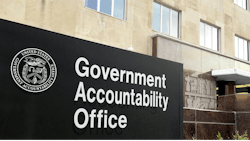While the US Pipeline and Hazardous Materials Safety Administration (PHMSA) issued rules in October 2019 and August 2022 to strengthen natural gas transmission safety regulations, it does not have adequate plans for implementing these requirements, the Government Accountability Office (GAO) said Apr. 3.
These PHMSA rules require operators to inspect more pipeline mileage and improve pipeline characteristic data on their pipeline systems, GAO said. Additional assessments of the 300,000-mile pipeline network could reduce the risk to people near pipelines.
PHMSA’s 2019 and 2022 rules set minimum safety standards for all natural gas pipelines and include regulations for a risk-based integrity management (IM) program. Under the IM regulations, pipeline operators must establish programs to assess, identify, and mitigate risks to pipelines in high-consequence areas that may include areas with homes or schools and other highly populated areas, GAO explained.
PHMSA has largely implemented the 2019 final rule by providing training to federal and state pipeline inspectors and guidance to the pipeline industry, the government watchdog said.
But stakeholders, including representatives from the pipeline industry and safety groups, state regulatory agencies and natural gas pipeline operators, told GAO they “experienced challenges with PHMSA's implementation of the 2019 final rule, including the timeliness and clarity of related guidance.”
PHMSA officials told GAO the agency is implementing the 2022 final rule, but that it does not have or intend to develop an implementation plan to guide its efforts. Instead, officials have completed several activities related to the 2022 final rule and created a task list of the remaining activities, GAO said.
“GAO found that the document does not contain clear objectives, timelines or communication strategies for these activities,” the report said. “By creating a plan for the remaining activities, PHMSA could better ensure that officials complete these activities in a timely manner and provide relevant information to the appropriate audiences.”
The watchdog also found that PHMSA’s Final Rule Implementation website “does not include complete information” for either rule.
Operators can use two methods to identify high-consequence areas. One of these methods calculates the potential impact radius of a pipeline incident.
PHMSA officials told GAO the agency is considering regulatory changes to improve the accuracy of this method. However, GAO's analysis found that “PHMSA lacks complete information from actual pipeline incidents that would help it determine if this method is accurate. Determining what additional data are needed from operators could improve the quality of PHMSA's data on pipeline incidents and assist the agency in evaluating the method's accuracy over time.”
GAO recommends that PHMSA (1) evaluate what additional data is needed from operators to better understand the actual impact of pipeline incidents, as the agency considers possible changes to the potential impact radius calculation, (2) develop a plan for the remaining activities to implement the 2022 final rule, and (3) update its Final Rule Implementation web pages to increase accessibility to information and guidance related to the 2019 and 2022 final rules.
GAO said the Department of Transportation, which oversees PHMSA, concurred with its recommendations.
The report comes as Congress is working on another pipeline safety act reauthorization this year. The act likely will include new pipeline safety actions for PHMSA to implement.
The House Energy and Commerce Committee and the House Transportation and Infrastructure Committee have approved reauthorization, but with different bill provisions. The Senate is expected to begin work soon on its version of pipeline safety reauthorization.
Congress must finalize a compromise bill before reauthorization is voted on and moved to the president, most likely by end-2024.

